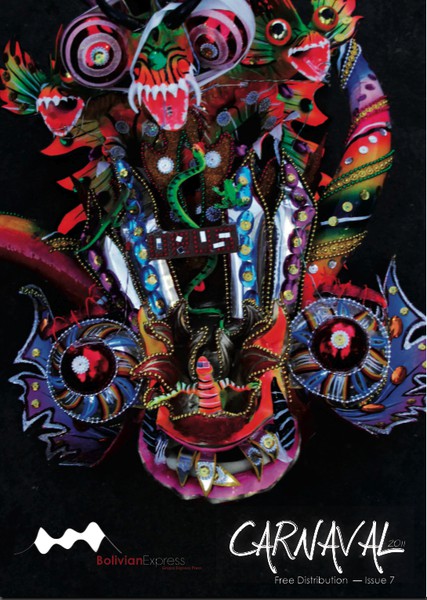
One of many ways to show gratitude, an image that allows us to remember the huge impact of the fiesta in Bolivia...A demonstration of its intense resonanace for people across the globe... Motivating people around the world, carnival, ultimately, is a grand and magical union.
BX: Is your tattoo a representation of the Carnaval Devil in Bolivia?
I: Yes, it’s the famous figure from the Diablada, which is a 100% Boivian folkdance. It is one of the most representative cultural symbols of Bolivia, especially in its relation to el Carnaval.
BX: What can you tell us about this Carnaval character and its importance to Bolivian culture?
I: The devil mask is used in the Diablada, which is a dance which represents the fight between good and evil through the characters of angels and devils. This figure represents the joy of the Carnaval de Oruro, which is part of our cultural heritage.
BX: What’s the secret as to why Bolivians are so devoted to Carnaval?
I: It seems to me that Carnaval is a fiesta in which, for one weekend, people can forget their problems and dedicate themselves to celebrating life and its pleasures. It´s a party that is very easy to fall in love with!
BX: What made you want to have a design with this meaning on your body forever?
I: I chose this image because for me it is a symbol of the fiesta which unites all Bolivians in celebration. It´s a representation of Bolivian culture.

 Download
Download





















